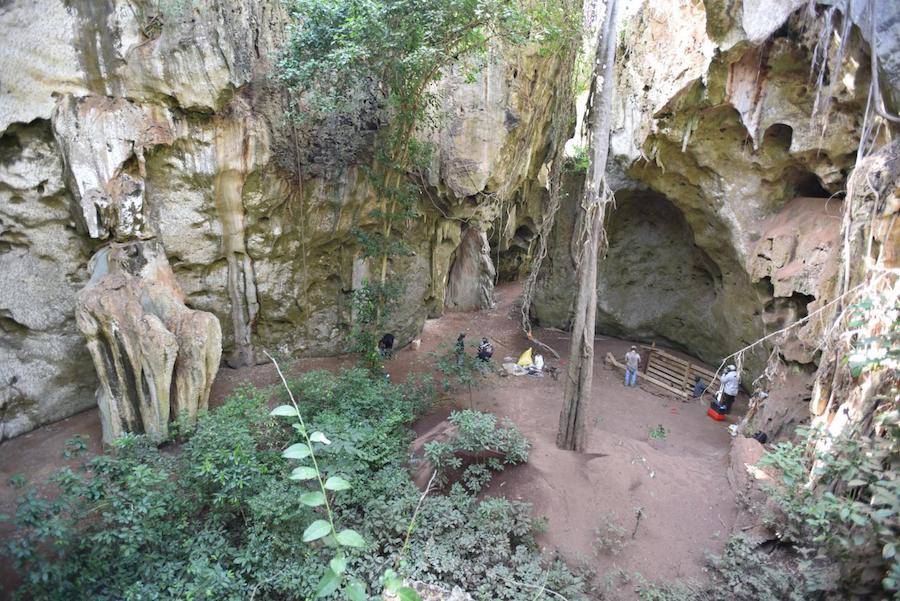The discovery shows that humans' remarkable ability to adapt is the real reason major advances happened during the Stone Age.

Mohammad ShoaeeThe first substantial cave record from coastal Kenya shows gradual changes in innovations beginning 67,000 years ago.
An international, interdisciplinary group of researchers have uncovered human innovations from at least 67,000 years ago. The artifacts were found in a cave located in a coastal area of Africa that, up until now, there was very little information on.
The research, published in the journal Nature Communications on May 9, 2018, gives us new information about human history and evolution.
Nicole Boivin, from the Department of Archaeology at the Max Planck Institute for the Science of Human History in Germany and an author of the study, spoke with All That’s Interesting about the discoveries. She described the coastal East African cave, called Panga ya Saidi, as, “an enormous, beautiful, well-preserved complex. The cave roofs had fallen in many thousands of years ago so the caves were open to the sky and dripping with vines.”
In human history, a cultural and technological transition happened between the Middle Stone Age and the Later Stone Age, which many archaeologists believe was due to a major revolution or migration. But ideas on how and why this happened come primarily from research on South Africa and the Rift Valley.
That’s because, until now, human history in coastal East Africa has been largely unexplored. This gap in research leaves us with gaps in information on our history.
Boivin was initially following up on an old report about artifacts in a smaller cave in 2009 when she and her colleagues discovered the huge Panga ya Saidi cave right next door.
“We were with colleagues from the National Museum of Kenya’s Coastal Forest Conservation Unit and they got really excited about the extraordinary biodiversity at the site, which had rare flowers and plants,” she said. “But the most spectacular finding for us was huge pieces of Iron Age ceramics sitting right on the surface. The cave system seemed remarkably undisturbed since Iron Age people had occupied it hundreds of years before.”
The next season she returned with a team to investigate further, and that’s when they “started to make the big discoveries we report in the paper.”
So what exactly were these discoveries?
Tools, arrowheads, blades, ostrich eggshell beads, exotic manuports, and around 30,000 knapped Stone Age artifacts. “The earliest bead is from the species Conus,” Boivin told us. “The species is usually associated with tropical and subtropical seas, so it shows that early hunter-gatherers were using the coast.”
The bead, which dates back to around 63,000 years ago, is also the oldest bead recovered from Kenya.

Nature Selected artifacts from Panga ya Saidi.
The researchers believe these artifacts show that humans lived long-term in the cave environments when things like drought made other parts of Africa inhospitable.
“The coastal forest was a key locale for early modern humans in the region. Once they were established there, they seem to have occupied the region for a long time,” explained Boivin. “They’re subsisting in coastal tropical forests.”
“Occupation in a tropical forest-grassland environment adds to our knowledge that our species lived in a variety of habitats in Africa,” said Group Leader of the Stable Isotopes Lab. Dr. Patrick Roberts.
This could indicate the shift during the Stone Age had to do with human’s ability to adapt more than a sudden change. That, “flexibility may be the hallmark of our species.”
These major findings should encourage other archeologists to explore previously overlooked regions, including places with higher altitude, cold settings, and dry places.
“Archaeologists are in some ways low risk – we have to be if we want funding – so we go to places that we know will yield results,” said Boivin. “But this means we’ve developed a really limited understanding of the kinds of environments early Homo sapiens lived in.”
Next read about the 400-year-old artifacts uncovered at the first English settlement. Then read about this gruesome stone age burial site.






